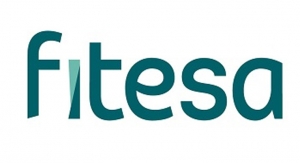Karen McIntyre, Editor03.09.17
Spunlace and wipes. Wipes and spunlace. Ever since the wipes boom of 2000 (the year which, I believe, this publication dubbed “The Year of the Wipes”), it seems that gains in wipes have meant gains for spunlace and vice versa. In the early 2000s, as companies like Procter & Gamble, Clorox, SC Johnson and more extended their personal and household care lines to include disposable wipes, new spunlace lines were being added nearly weekly in North America, Europe and the Middle East. Everyone, it seemed, wanted to cash in on this “convenience” trend as multinational companies and entrepreneurs alike worked overtime to come out with new ideas for wipes.
Sixteen years later, it seems the rate of large-scale new product introductions in wipes has slowed a bit, but new niche products (like guitar cleaning wipes or mosquito bite relieving wipes) continue to be introduced regularly. Whether or not one of these niche offerings will become a revolutionary, multimillion dollar brand like Swiffer is uncertain, but the fact that companies are still innovating bodes well for the market.
As wipes markets continue to expand, so has spunlace technology and new lines continue to be announced around the globe. This month, Turkey’s Mogul is adding its first foreign line, a spunlace machine, in South Carolina, and a number of new lines have been announced in China and Turkey. These lines offer state-of-the-art technology that provides features that will allow spunlace manufacturers to not only offer their customers the opportunity for diversification in wipes but into other markets like hygiene or medical.
This month, Nonwovens Industry spoke to spunlace manufacturers based around the world to find out where they see the market heading and they all agree. While diversification into new areas is important for growth, the wipes market will always be an important one for spunlace. No other technology will be able to offer the same combination of strength, absorbency, softness and cost effectiveness that the market requires, whether the product be for a baby, a household chore or a guitar string.
Also this month, associate editor Tara Olivo takes a look at the adult incontinence market (see page 36). The growing aging population, coupled with greater acceptance of a once taboo topic, have led to rapid gains in this market segment, not just in dollar terms but in product types and styles. Whatever the incontinence symptom, it seems, manufacturers are finding a way to make sure it can be managed so today’s sufferers can keep enjoying life.
As always, we appreciate your comments.
Karen McIntyre
Editor
kmcintyre@rodmanmedia.com
Sixteen years later, it seems the rate of large-scale new product introductions in wipes has slowed a bit, but new niche products (like guitar cleaning wipes or mosquito bite relieving wipes) continue to be introduced regularly. Whether or not one of these niche offerings will become a revolutionary, multimillion dollar brand like Swiffer is uncertain, but the fact that companies are still innovating bodes well for the market.
As wipes markets continue to expand, so has spunlace technology and new lines continue to be announced around the globe. This month, Turkey’s Mogul is adding its first foreign line, a spunlace machine, in South Carolina, and a number of new lines have been announced in China and Turkey. These lines offer state-of-the-art technology that provides features that will allow spunlace manufacturers to not only offer their customers the opportunity for diversification in wipes but into other markets like hygiene or medical.
This month, Nonwovens Industry spoke to spunlace manufacturers based around the world to find out where they see the market heading and they all agree. While diversification into new areas is important for growth, the wipes market will always be an important one for spunlace. No other technology will be able to offer the same combination of strength, absorbency, softness and cost effectiveness that the market requires, whether the product be for a baby, a household chore or a guitar string.
Also this month, associate editor Tara Olivo takes a look at the adult incontinence market (see page 36). The growing aging population, coupled with greater acceptance of a once taboo topic, have led to rapid gains in this market segment, not just in dollar terms but in product types and styles. Whatever the incontinence symptom, it seems, manufacturers are finding a way to make sure it can be managed so today’s sufferers can keep enjoying life.
As always, we appreciate your comments.
Karen McIntyre
Editor
kmcintyre@rodmanmedia.com













